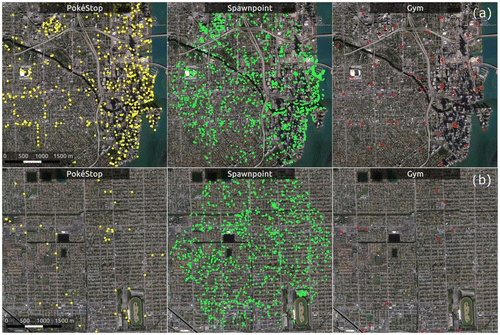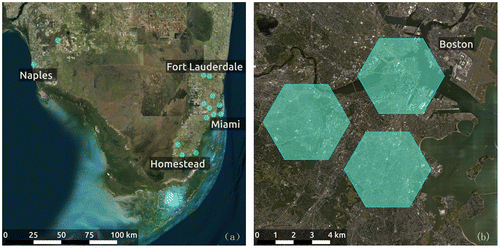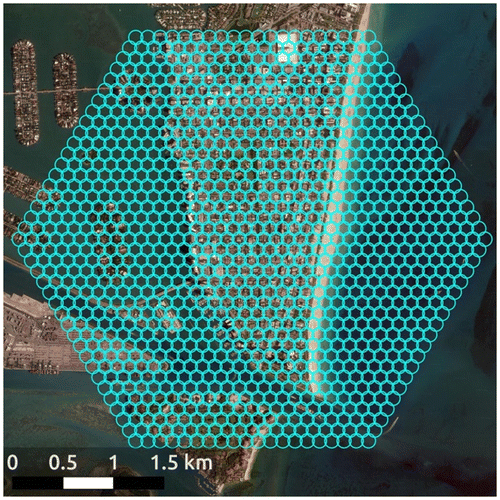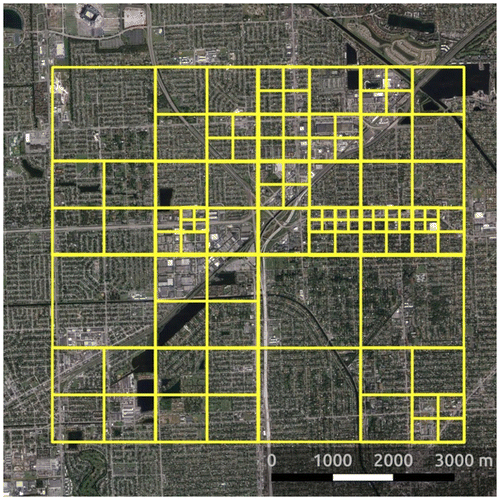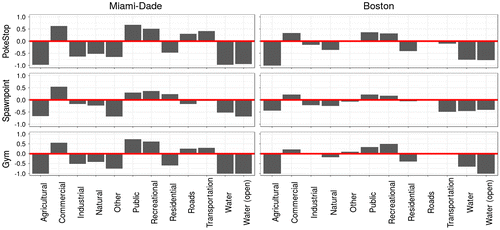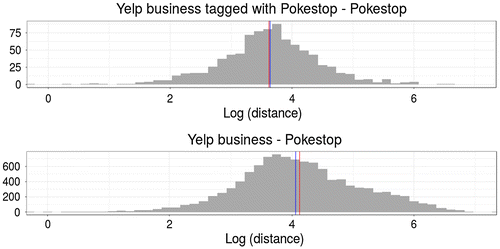Figures & data
Table 1. Estimation results for the number of PokéStops.
Table 2. Pokémon Go-related point data-set counts on different land-use categories along with expected counts calculated based on area.
Figure 6. Computed Cross K-function (black line) with simulation mean (red dashed line) and confidence envelopes (gray area) for random labeling using a Monte Carlo simulation with 999 permutations.


